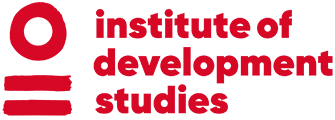post
Climate youth protests have highlighted the radical space of the streets. As many students cannot participate in such action, we ask what a radical space of schooling might look like in response to the climate crisis.
Looking back at radical youth climate action
It was Friday 20th September 2019 in an English coastal town. There were 10,000 children and young people marching through the streets, knowing that millions of others were doing likewise across the globe. We were there as citizens, as parents and as researchers. The frisson and excitement of the young protestors was palpable; the call to action from Greta Thunberg had evidently sparked creative imaginaries, seen in the waves of colour of placards and costumes. The usually subdued weekday seafront had exploded into sound. The intermingling of the shrillness of gulls and protestors’ whistles signalled a sense of urgency, while the rhythmic drumming and chanting emphasised collective action. We were held captive under the unseasonable heat of an autumnal sun.
Looking at the underlying tensions of youth protest
The unity of the march belied underlying frantic tensions. Local education authorities, school leaders, parents and students were navigating competing responsibilities to those out of school and on the streets. Stories circulated of staff barring students leaving the school gates and young people climbing over fences to join in. School leaders supportive of the right of young citizens to strike found themselves caught in a double bind: their safeguarding responsibilities meant prioritising the welfare and whereabouts of their students during a school day.
One inventive headteacher told students and parents that they could not give permission for students to leave school. Nonetheless, they reminded the community that with protest comes personal cost, such as loss of time, liberty or income. In so doing, they signalled that the cost of ‘being in trouble’ from school was the factor that transformed the student action into a protest.
Some school leaders and parents vehemently refused permission for young people to strike. There were questions of legitimacy about earning the right to participate, including whether young people had demonstrated sufficient prior commitment to environmental concerns, or asking if they were simply ‘bunking off’? Some commentary focused on the requirement for students to be in school to gain the skills to address the climate crisis, as well as the right to protest as responsibilised adults in the future.
Looking in at the majority remaining at school
The majority of students remained in school that day. Some were not permitted, able or aware and others felt unenthused or had other pressing priorities. Who was left behind? Perhaps those who may have wished to be there, but couldn’t? Or those who did not have the opportunities to engage?
This begs a further question about the role of the school in engaging students with existential matters, to ensure equity and justice for all as citizens, regardless of age, class, gender, etc. There are huge implications for schools. This includes issues of governance, curricular and pedagogy. It requires schools to go beyond teaching the facts of climate change and issuing strictures for altered ‘green’ behaviours, such as recycling.
Looking in at radical possibilities for all students
In our own teaching and research, we explore the possibilities of opening-up radical educational spaces for all to engage with the uncertainty of climate change. This includes those at primary, secondary and special schools, as well as in higher education. In their everyday lives, young people (and teachers) tell us that they are already immersed in, and grappling with, contradictions and tensions, as well as ethical and existential concerns, about how to live together on a damaged planet. This includes, for example, whether to take action in support of climate protests; how to reduce plastics in a world in which they proliferate; and the willingness or possibilities to shift lifestyles to reduce fuel consumption.
We work alongside teachers, to experiment with creative approaches that generate a space to question, probe and deliberate difficult concerns and diverse knowledge. For example, we recently worked with 10-year-old students on a project that encouraged a deep attention to what water might teach us. They explored droplets falling onto aluminium foil using a pipette and magnifying glass, becoming absorbed in its varied properties; and they silently reflected on its spiritual associations and personal resonances. They deliberated a real-life example of a Dubai golf course, that had been given an environmental award for its enhanced watering system, from the imagined perspectives of golf course management, tourists, residents, environmentalists and local fauna. These activities raised questions, surfaced tensions, and provoked competing feelings. Slow contemplation enabled all students to come to their own positions on the valuing of water.
In such activities, teachers do not have the answers; instead, they place themselves alongside students in the vulnerable place of ‘not knowing’. It is demanding work, for teachers and students alike, for it requires staying with difficulty, including contradictory knowledge and feelings. At the same time, it is hopeful in that it draws everyone’s attention to what is loved and might be worth preserving now, as well what might be transformed for the future. The aim of this work is to enable students to ask themselves what this ‘lesson’ might mean for ‘me, my school and my community’.
Looking out at the world
At a recent online COP-27 fringe event, a youth intercultural coffee morning, organised by the Anna Lindh Foundation, a young person from the host country talked of their work to clean the Nile of plastics. The group has thousands of youth volunteers on a waiting list. Where there are possibilities, there is a willingness for action. The role of the radical school is to engage students in identifying such possibilities. This includes fostering an attentive readiness to the world, in order to interrupt a ‘business as usual’, including one’s own desires. This is what the educational philosopher, Gert Biesta, calls ‘world-centred education’: where we might hear what the world is asking of us; not vice versa.






